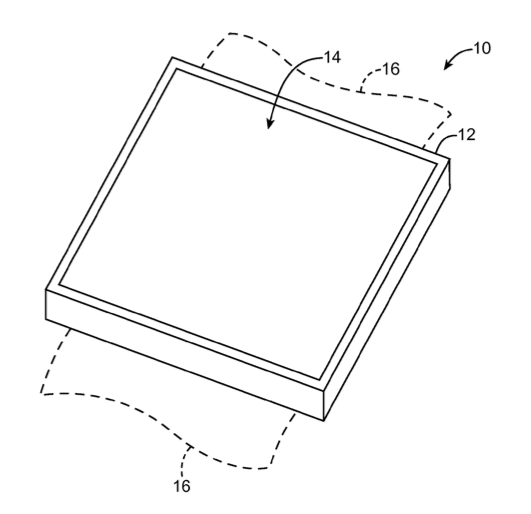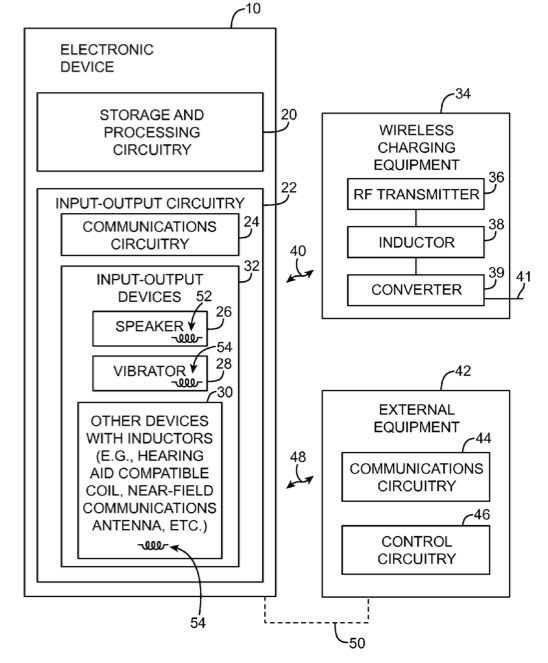Apple exploring double-duty NFC, inductive charging coil for smartwatches, mobile phones
On the heels of a report suggesting that Apple's long-anticipated "iWatch" could be unveiled within the next two weeks, a new patent application published Thursday by the U.S. Patent and Trademark Office shows that the company has continued to contemplate wireless charging solutions for just such a device.
The patent, entitled "wirelessly charged electronic device with shared inductor circuitry," describes a method in which inductive charging mechanisms can be made smaller in order to fit inside more diminutive wearables. Apple specifically calls out "wrist-watch devices, pendant devices, or other wearable...devices" alongside traditional portables like mobile phones.
Using a cable to charge these devices can be "unwieldy," Apple argues, but felt compelled to invent the new methods because current wireless charging circuitry may be too bulky.
Interestingly, the patent appears to focus on ways in which Apple could make use of inductors already present in devices, rather than duplicating hardware. The charging circuit could make use of the magnetic coils of a speaker, for instance, or NFC antennae.
"Switching circuitry in the wireless charging circuitry can selectively couple the capacitor to the inductor when wireless charging signals are being received and converted into power in the electronic device and can selectively isolate the inductor from the capacitor when it is desired to use the inductor as part of a speaker, vibrator, or near field communications circuit," the application reads.
The application was filed in February 2013 and Apple credits Jeffrey J. Terlizzi with the invention of U.S. Patent Application No. 13/776,436. Terlizzi's name is on a number of Apple patents, including the Lightning connector.
Apple has been investigating wireless charging technology for years, holding a bevy of patents on the subject covering both inductive and magnetic resonance charging. Most recently, the company won a patent for a charging dock that could switch between data synchronization, diagnostics, or charging based on the orientation of the device on the dock.
 AppleInsider Staff
AppleInsider Staff












 Andrew Orr
Andrew Orr
 Wesley Hilliard
Wesley Hilliard


 Amber Neely
Amber Neely

 William Gallagher
William Gallagher








